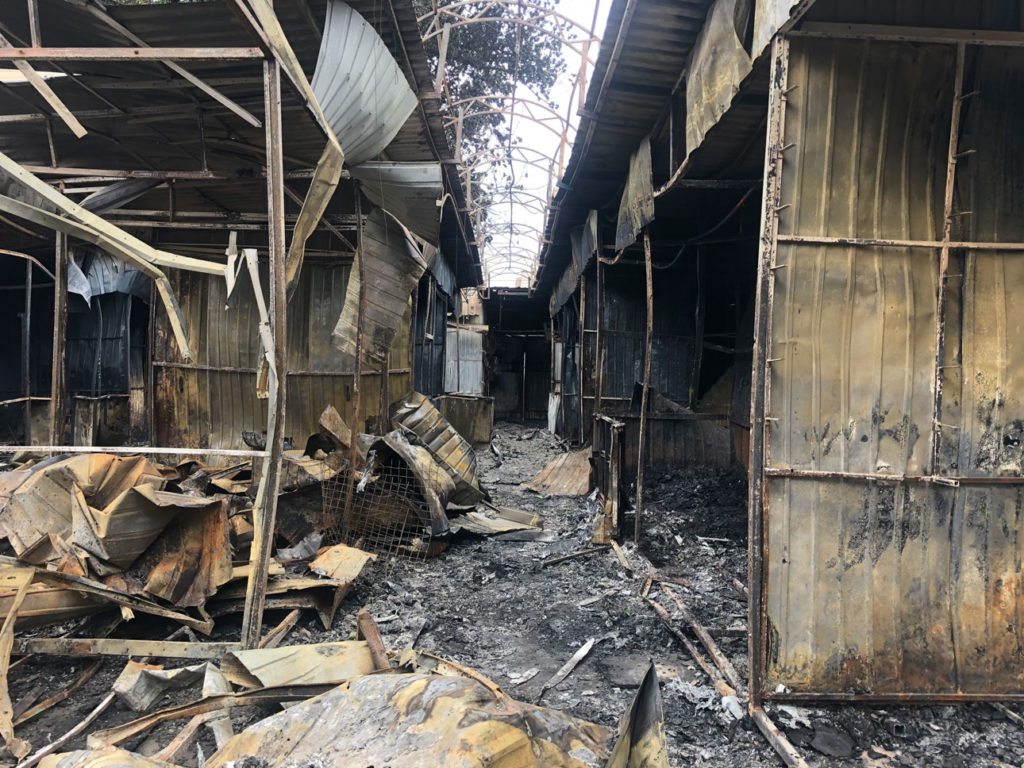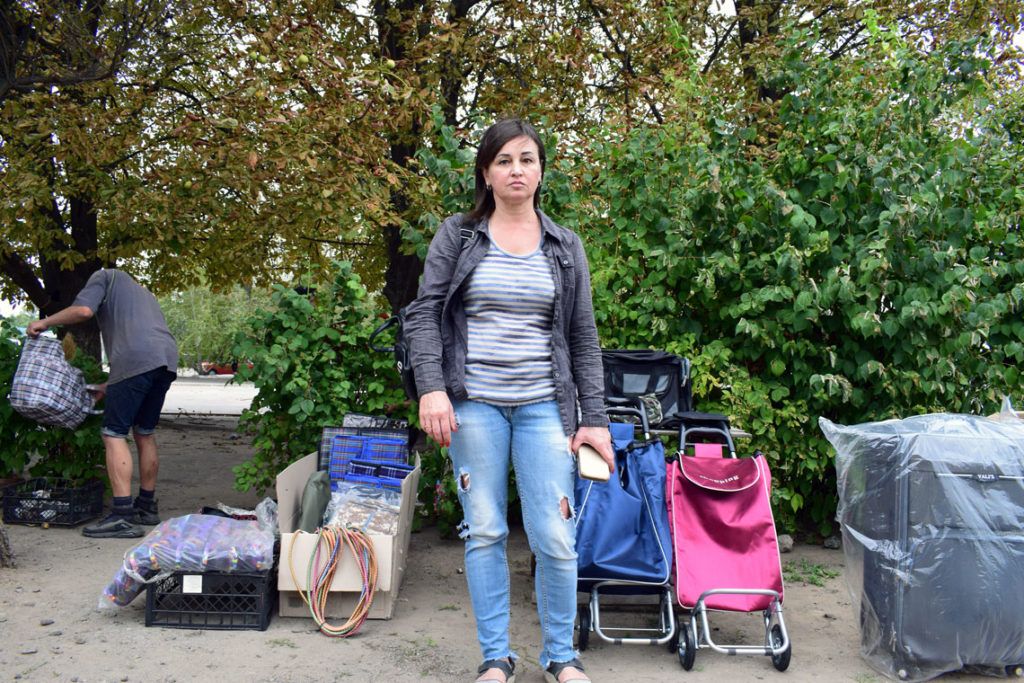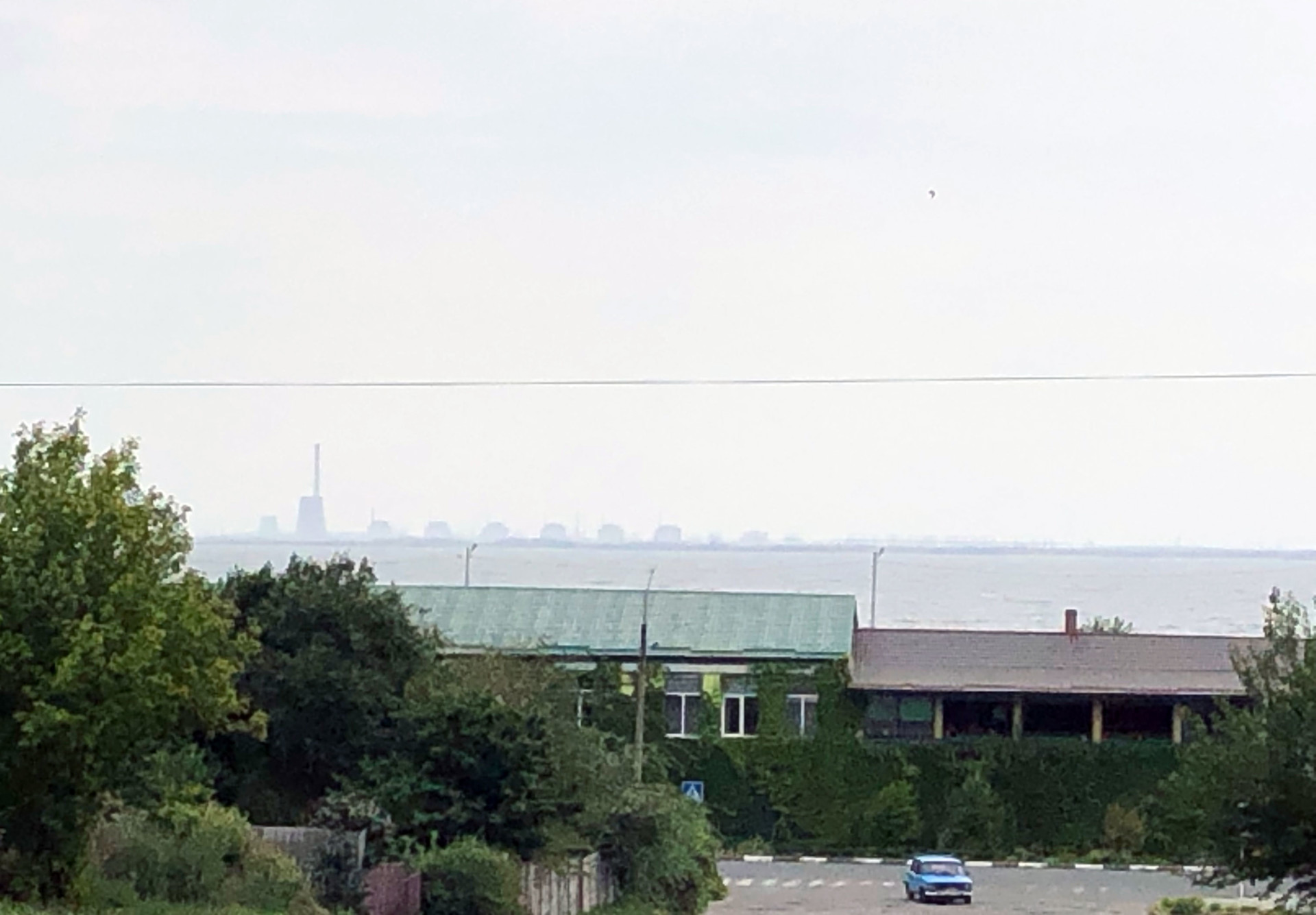When shelling had made a trip outside a frightening prospect, Svitlana took her children and fled Russian-occupied Enerhodar, a satellite city for the Zaporizhzhia Power Station, Europe’s largest nuclear plant.
But the decision meant leaving behind her husband, one of many Ukrainian employees who continue to operate the plant under Russian occupation.
“If it wasn’t for the [power plant workers] there would be another Chernobyl,” she said.
Russia seized the plant in early March, but shelling around the facility has recently intensified, sparking fresh fears of an international nuclear crisis. In Ukraine, trauma still lingers from the 1986 Chernobyl disaster, which is often described as the world’s worst nuclear catastrophe.
Ukraine and Russia have blamed each other for the attacks around the nuclear power plant.
Last month, Ukrainian authorities warned that Moscow could try and manufacture a nuclear disaster at the plant. The feared catastrophe never came, but days later, the plant was temporarily disconnected from the national power grid, causing outages in parts of Zaporizhzhia region.
The escalation in fighting and nuclear threat has continued to displace residents from Ukraine’s south. On a sunny weekend morning at an evacuation center in Zaporizhzhia, Svitlana stood among dozens of families who recently fled Russian-occupied areas and were lining up to be processed or to receive a free meal.
Svitlana, whose name has been changed to protect her family’s identity, said most of her colleagues at her former job have fled Enerhodar and those who remain were making plans to leave.
“Everyone is afraid,” she said.
Svitlana said she worries for her husband, but frequent shelling had been taking a toll on her young children, who were constantly stressed. She said since Russia occupied the city, it has also been difficult to speak freely amid fears of surveillance.
“You can’t tell anyone anything in this city now,” she said.
Many of those arriving at the evacuation point from occupied areas were afraid to speak on the record in case they need to return or because they fear for loved ones who have remained in occupied areas. Several people who spoke to New Lines said they had a friend or relative who worked at the power plant.
The plant employed around 11,000 people before Russian tanks rolled across Ukraine’s borders on Feb. 24. Around half of Enerhodar’s population has fled since the invasion, with a number of power plant employees joining the exodus, according to media reports.
This week, the International Atomic Energy Agency (IAEA), the United Nations nuclear watchdog, began a long-awaited inspection of the power station, with IAEA head Rafael Grossi telling reporters that the physical integrity of the plant has been violated several times and he remained worried. A small number of experts are expected to stay at the facility and continue their work.
Ukrainian authorities, however, fear inspectors won’t be able to get the real picture. Ukraine’s President Volodymyr Zelenskyy said Russian forces have been trying to deceive the mission, including by intimidating residents into lying to the IAEA.
Ukraine wants to see the plant demilitarized and handed over to Ukrainian nuclear specialists, something Zelenskyy said that the IAEA had failed to call for so far.
Not everyone who fled from occupied cities around the power plant fears a nuclear catastrophe though.
Maryna, whose name has also been changed to protect her family’s identity, said she was far more concerned about shelling than the dangers of a nuclear meltdown.
“My father was a Chernobyl liquidator. We are ready,” she said, referring to workers tasked with cleaning up and reducing the consequences of the disaster.
“Back in the ‘90s, at school they taught us how to seal windows, when we’ll hear the signals, what signals are given,” Maryna added.
In Zaporizhzhia, which sits around 30 miles northeast of the power station, authorities have also started preparing for the worst.
They have been formulating civilian evacuation plans in the event of an emergency, running training exercises for rescue workers and distributing potassium iodide tablets to those who live within 30 miles of the plant. The pills help stop the absorption of radioactive iodine by the thyroid.
Across the Dnieper River from the Zaporizhzhia Nuclear Power Plant, the industrial city of Nikopol sits just a few miles from the facility. Fears of a nuclear disaster combined with frequent shelling have forced around half of the city’s prewar population of 115,000 to flee, locals say.

Those who remain say life has been tough. Anastasia, whose home repairs shop overlooks the nuclear power plant’s six reactors, said business has suffered, but she needed to stay and help those who couldn’t leave, many of whom are pensioners.
“It’s a threat for the whole continent. For us first, and then … depending on the wind … how much others get,” she said. “It’s scary, and we understand that we won’t even have time to leave.”
While the situation at the power plant has alarmed many, experts have sought to assuage fears of a Europe-wide disaster. Last month experts told CNN that if a disaster were to occur, it would largely affect local residents.
In the middle of summer, Russia started firing on Nikopol from around the power plant. Anastasia said Russian forces used to shell the city at night but recently they’ve started staging daytime attacks too.
“[And it’s] not some chosen location, just residential areas where there is nothing but residential buildings and people,” Anastasia said.
In late August, a Grad rocket destroyed the local market, setting it ablaze, ruining the livelihoods of dozens of traders there. For more than two decades, Tatyana used to sell all kinds of items for the home — from stationary to blankets to bags — at her shop. Then, everything burned, she said.
Tatyana now sells what remains of her wares online and on the side of the road, across the street from the wreckage of the market.

Her children, who live in other parts of the country and abroad, have been encouraging her to leave, but despite losing her business, Tatyana said she was staying for now. She said she doesn’t want to leave her house and husband, who is serving in the military.
But staying means living with uncertainty and sleeping in the basement every night.
“In the evening, when it gets dark, we go down straight away,” she said. “Because when something flies in … you can’t guess where it will land.”
She said living just a few miles from the nuclear power plant added to her fears. Being close to the facility had always been scary, she said, but with Russian forces occupying the plant, the situation was unpredictable.
“They have their own logic that we can’t understand, so anything could happen,” she said.



